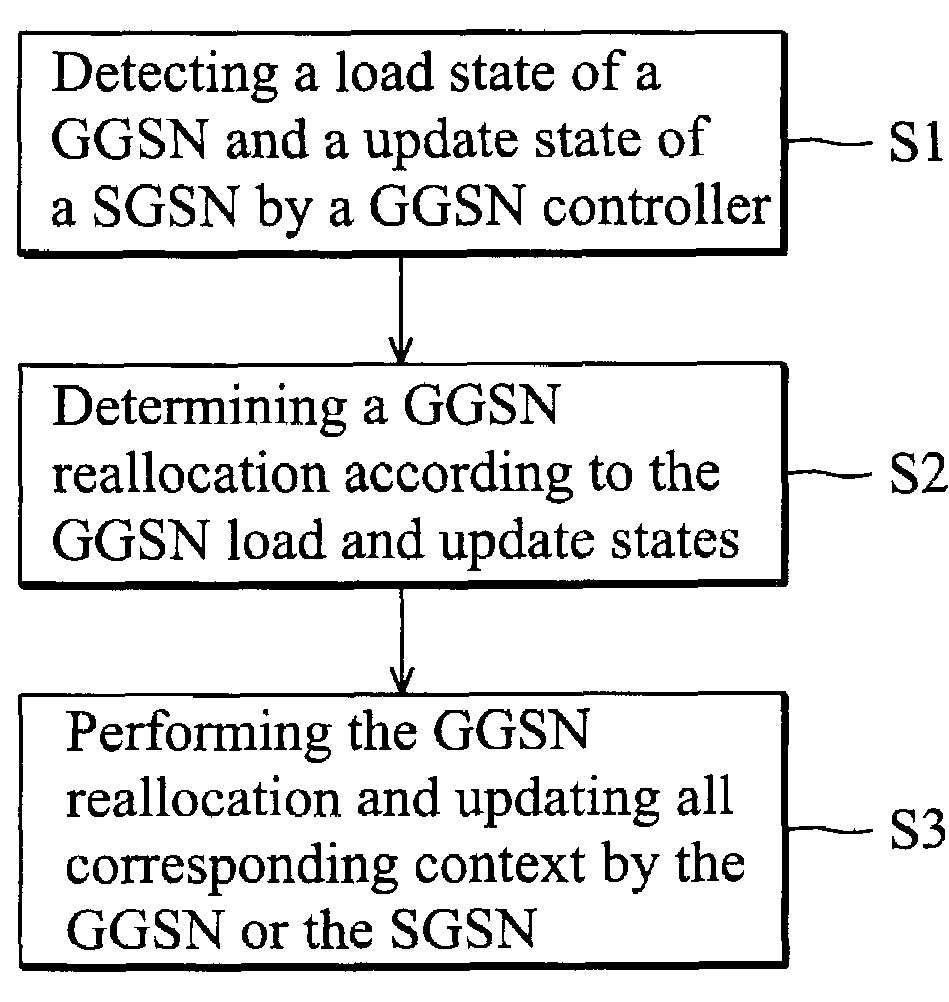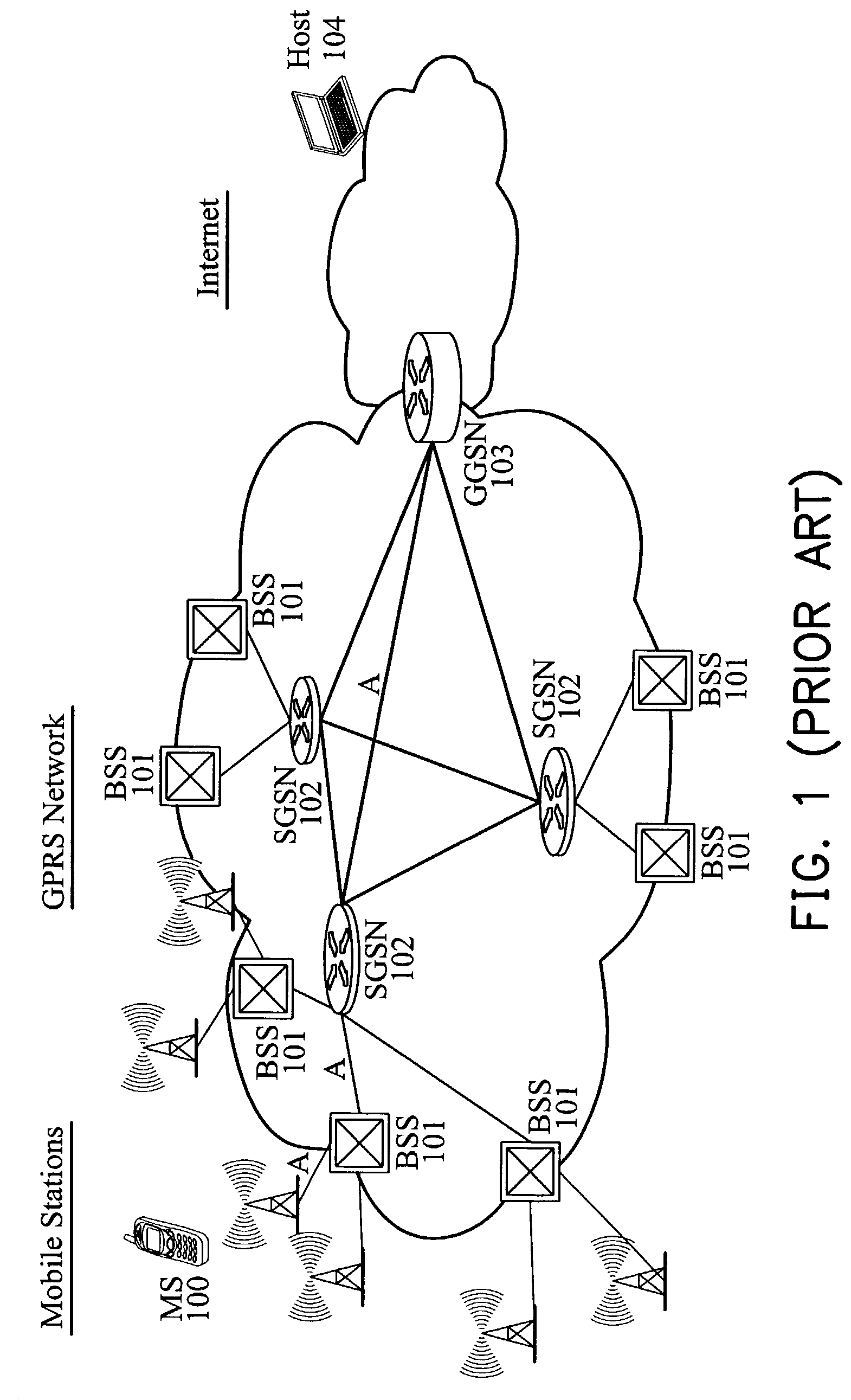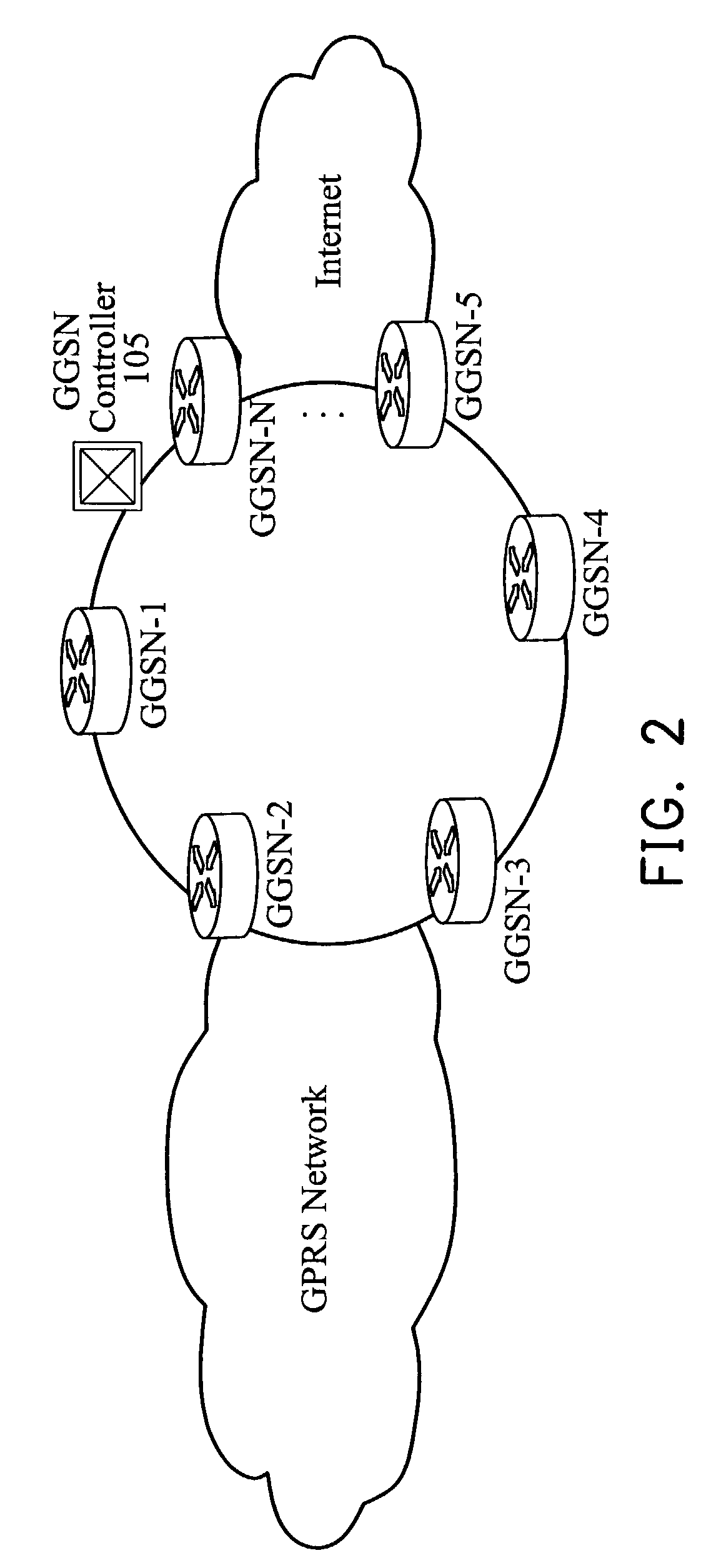Re-allocation method for a distributed GGSN system
a distributed gateway and node technology, applied in the field of re-allocation methods for distributed gateway gprs support node (ggsn) systems, can solve the problem that ggsns cannot perform load balance, and achieve the effect of improving the scalability of the ggsn system and effectively avoiding service interruption from ggsn re-allocation performan
- Summary
- Abstract
- Description
- Claims
- Application Information
AI Technical Summary
Benefits of technology
Problems solved by technology
Method used
Image
Examples
Embodiment Construction
[0020]The following numbers denote the same elements throughout the description and drawings.
[0021]FIG. 2 is a schematic diagram of a distributed GGSN system according to the invention. As shown in FIG. 2, a number of GGSNs (GGSN-1 to GGSN-N) connect to a GGSN network to form the distributed GGSN system. A GGSN controller 105, not shown in the prior art, is introduced to monitor and control the load of all GGSNs from GGSN-1 to GGSN-N and the updated state of all SGSNs (FIG. 3).
[0022]FIG. 3 is a schematic diagram of the distributed GGSN system in a GPRS network according to the invention. As shown in FIG. 3, in the GPRS system with the distributed GGSNs, a mobile station 100 can be assigned to a specific GGSN such as 103-N statically and also be redirected to another GGSN such as 103-N dynamically. The GGSN controller can determine that the mobile station 100 is connected to the GGSN 103-1 or the GGSN 103-N by monitoring and controlling the load of GGSNs.
[0023]FIGS. 4 and 5 depict tw...
PUM
 Login to View More
Login to View More Abstract
Description
Claims
Application Information
 Login to View More
Login to View More - R&D
- Intellectual Property
- Life Sciences
- Materials
- Tech Scout
- Unparalleled Data Quality
- Higher Quality Content
- 60% Fewer Hallucinations
Browse by: Latest US Patents, China's latest patents, Technical Efficacy Thesaurus, Application Domain, Technology Topic, Popular Technical Reports.
© 2025 PatSnap. All rights reserved.Legal|Privacy policy|Modern Slavery Act Transparency Statement|Sitemap|About US| Contact US: help@patsnap.com



